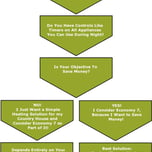- GreenMatch
- Blog
- Top EU Countries in Clean Energy
EU Countries by Production of Clean Energy
In 2014, the amount of renewable energy share reached 14% of total energy consumption and was estimated to reach 16.4% in 2015. The goal of 20% for the European Union is now within a reachable distance. But, it is now time for all member states to keep up their efforts to reach the goal. Following map highlights the sustainable energy execution of the European Union, introduced by the Paris agreement in 2015.
All in all, Europe is performing admirably in its organisation of renewables. In 2011, renewables created 21.7% of the EU's power; after three years, this figure has achieved 27.5% and is expected to grow to 50% by 2030. The EU's underlying endeavours in advancing the utilisation of renewables encouraged this. Proceeded by the development which brought down sustainable costs: the costs of photovoltaic modules fell by 80% between the end of 2009 and late 2015. Renewables have now moved toward becoming cost-focused, and even sometimes significantly less expensive than fossil fuels.
The turnover in the renewable energy sector claimed an amount of €144 bn in 2014 and over one million jobs were created, thus it plays an important part in the European economy. European speculations have dropped by a large part since 2011 to €44 bn a year ago, while worldwide interests in sustainable power source have reached above €260 bn.
Why Are Renewables a Key Segment?
The Renewable Energy Directive has been and will keep on being, a focal component of the energy union strategy and a key driver for clean energy. With the point of making the EU the world’s number one spot for renewables. Renewables have played a noteworthy part in energy security. The predicted contribution to savings by reducing the number of imported non-renewables was €16 bn in 2015 and a projected €58 bn in 2030. Because of quick diminishing costs, renewables can be continuously
coordinated into the market.
The recast of the renewables mandate together with the market outline proposals will additionally empower the investment of renewables on an equal balance with other energy sources. Renewables run as an inseparable unit with energy proficiency. In the electricity segment, fuel changing from flammable petroleum derivatives to non-burnable renewables could decrease essential energy consumption. In the building part, renewable arrangements can enhance the energy execution of structures in a practical manner. Renewables are one of the backbones of lowering CO2 emissions.
What Is the Role of Renewables in Achieving the Paris Climate Objectives?
In 2015, renewables added to decreasing EU ozone depleting substance (GHG) outflows by 436 MtCO2eq, Italy's emission equivalent. Renewables assume a noteworthy part in making the EU a worldwide pioneer in development. EU countries hold 30% of the patents in renewable energy globally. A real Pioneer move of the EU to stay ahead because the EU will keep the priority on research and innovation in the foreseeable future.
At the 2015 Environmental Change Gathering in Paris, Europe conferred itself to adding to constraining the rise of global temperatures to just 1.5°. Renewables, including energy proficiency, are critical to achieving this objective.
Following Infographic created by Greenmatch shows the top 10 European countries sorted by produced hydro energy, geothermal energy, wind energy, biofuel energy, solar energy (photovoltaic, thermal) and the total created renewable energy.

If you would like to use this infographic on your website, use the embed code below:
We strive to connect our customers with the right product and supplier. Would you like to be part of GreenMatch?




